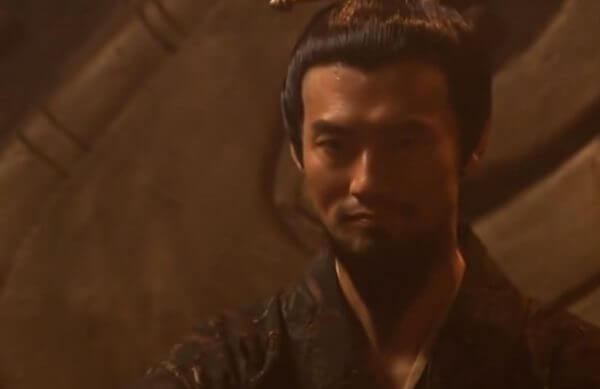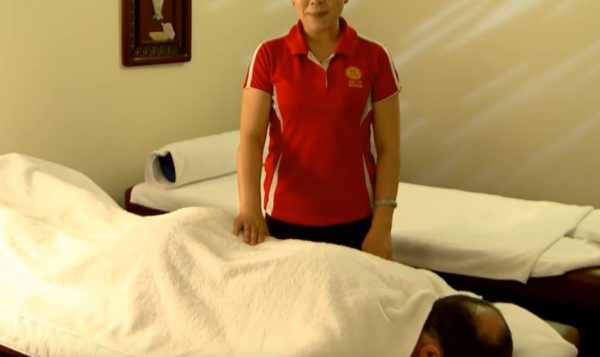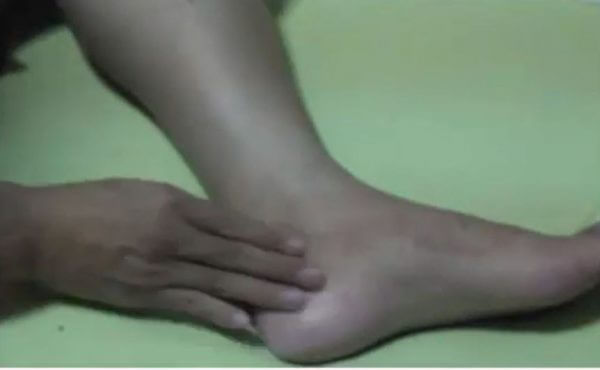Hidden Mysteries of Acupressure

Medically reviewed and approved by Nataniel Josue M.D.
Acupressure? Like every essential element of traditional Chinese medicine, acupuncture has its detractors and advocates.
The more purist scientists doubt these procedures' physiological basis, while the rest seem only to be interested in their extraordinary results. But what is acupressure? What Acupressure all about? What are its fundamentals? Does it work? We will now answer all these questions.
What is acupressure?

Huang Di, the Yellow Emperor, was the first great author of traditional Chinese medicine through his emblematic work Nei Ching Sou Wen, published nearly 2,600 years ago. For the first time, it mentions the most popular medical techniques of the Eastern giant, such as acupuncture, moxibustion, phytotherapy, qigong, and acupressure.
The acupressure is a variant of acupuncture itself but without the need for needles, which are replaced by finger pressure methods at the same strategic points of the body "meridians." This technique gives balance to the Qui or Chi, that is our vital energy. In this way, acupressure helps to heal us.
This massive text describes the fundamental theories of traditional Chinese medicine, including Yin and Yang, capable of modifying the five constitutive elements of the universe: water, earth, fire, wood, and metal.
The set of these components are known as vital energy – Qi or Chi -. Its balance gives health and diseases appear when this balance is lost.
What are meridians in acupuncture?
Besides, it is explained that Chi is distributed in the body through energy channels called "meridians."
Meridians are the places where acupuncture and acupressure are applied run along these meridians and range from 365 to 600 points, depending on the school being studied. Acupressure techniques are applied to some of these points when the balance of vital energy has been lost, and diseases appear.
Depending on the system or organ affected, several meridians will be approached with the final intention of eliminating energy blockages, restoring the flow of regular Chi, and thus eliminating the symptoms that appear.
Fundamentals of acupressure
As previously explained, the purpose of acupressure is to re-establish vital energy when altered for any reason. It is evident that, for traditional Chinese medicine, health and disease are conceived from an energetic and spiritual perspective.
These concepts are acceptable as it is an ancient medical practice that initially lacked the scientific basis that we can find today. However, the fundamentals of traditional Chinese medicine are not entirely empirical.
Acupressure First Study
Huang Di came to study corpses secretly to deepen his medical knowledge.
His texts described for the first time the blood circulation, with a dark (venous) and a light (arterial) blood, the existence and functioning of autonomous nerves, and the genesis of degenerative diseases that for many years were considered incurable by Western medicine.
The anatomical and physiological studies carried out by Huang Di and his assistants described Yin as being in charge of the viscera and Yang's structural state as being responsible for their functions.
Representing the internal organs, Yin was in charge of the five storers: heart, liver, spleen, lungs, and kidneys, while Yang referred to the six transformers: small intestine, gallbladder, stomach, large intestine, bladder, and the triple heater, which is not entertained as such but a set of organic functions.
Energy Channels
These organs are intimately connected by a complex set of meridians or energy channels, and if a disease interrupts this flow, there is an imbalance of Yin and Yang.
The body can bear without too many inconveniences an interruption of the flow of energy or imbalance of Yin and Yang if these are slight in intensity and time. Still, if the alterations are very intense, prolonged, or caused by a defect in the meridians' function, the disease appears.
Fundamentals
It is in these moments of imbalance that acupressure comes into action.
That, like acupuncture, is aimed at:
- Diagnose the cause of the disease.
- Find out at which meridians the normal flow of Chi has been interrupted or an imbalance of Yin and Yang has appeared and manipulated the appropriate energy points.
- To tonify again, the flow of Chi and to recover the balance of Yin and Yang to restore health to the affected individual.
One of the most widely used examples in literature specializing in traditional Chinese medicine is that of a patient with too many germs or microbes in their bodies, which can manifest as "bad heat" in the lungs.
If the meridian system fails to provide enough defense energy to overcome it, respiratory symptoms appear, expressing Yang's excess.
Who does acupressure? Acupressor

The mission of the acupressor is to re-establish energy balance, in this case, by increasing the presence of Yin to "disperse heat" through the manipulation of specific energy points. In terms of Western medicine, this would translate into increased defenses – white blood cells – to eliminate excess pathogenic microorganisms.
Does acupressure really work?
In the Eastern medical world, there is no doubt about it: acupressure works
Using current scientific methods, many Chinese researchers have found that acupressure improves the body's essential functions.
- It can increase the number of leukocytes in people who do not have enough.
- Reduces it in those who have too many as well.
- It increases the presence of antibodies to strengthen our immune system.
- Regulates blood pH.
- Controls the number of numerous chemicals in our muscles.
What are the benefits of acupressure? What does Western science say about it?

While there has historically been much skepticism towards traditional Chinese medicine in Europe and America, the most modern medical journals already consider acupressure a valid therapeutic method. These even include it in protocols and algorithms for the treatment of various pathologies.
It reduces pain
Recent studies have demonstrated the benefits of acupressure for pain management in many patients with greater or lesser value. A study published by the Journal of Midwifery & Women's Health in 2017 (Schlaeger et al.) showed that acupressure was able to decrease pain during childbirth, as well as the duration of birth itself.
Smith and his team arrived at a similar result in a study that involved almost 3500 women and can be found in the Cochrane Library.
Acupressure is also useful for the management of postoperative pain, as demonstrated by Pouy and his partners. These, in their 2019 study published in the International Journal of Adolescent Medicine and Health, concluded that this technique has a positive effect on pain reduction following tonsil removal surgery in children and adolescents.
Acupressure can substitute acupuncture
This finding is also interesting because it involves a very vulnerable group such as pediatric patients. They may also benefit from acupuncture because they are much more afraid of needles.
It reduces vomiting associated with anesthesia
The classical texts of traditional Chinese medicine recommend acupressure over other tools in these patients. Other of the most frequent complications of surgery are nausea and vomiting associated with anesthesia.
In these cases, acupressure is also useful, as demonstrated by the study published in 2018 by the Journal of Perianesthesia Nursing (Ünülü M and Kaya N).
This paper concludes that specific acupressure of an energy point known as Neiguan Point or P6 significantly reduces the presence of postoperative nausea and vomiting.
Acupressure can be self-adminestered
An additional advantage of acupressure is the possibility of being self-administered. A study by Murphy and his team was published this year in the scientific journal Pain Medicine.
This article commented on the practical results of acupressure self-administration to relieve pain and fatigue related to pain in the lower back or lumbar region.
It helps to get asleep
The personal practice of acupressure also works to fall asleep in different settings. The journal Sleep Medicine Reviews published in 2018 a very extensive meta-analysis showing how acupressure helped various people sleep.
This study included older adults, cancer patients, nephropathy on dialysis, obese people with sleep apnea, and other individuals with insomnia (Waits and partners.).
It helps to reduce obesity
Since we mentioned obese people in the previous paragraph, they may favor acupressure to control their weight. The scientific supplement Medicine (Baltimore) recently published a study demonstrating the benefits of auricular acupressure.
It works for obese or overweight individuals to lose a few extra kilos and modify their lifestyle and eating habits (Ching-Feng and colleagues.).
Acupressure is beneficial for various diseases
As well as these works mentioned, hundreds more prove the benefits of acupressure for different people suffering from various diseases.
The physiological underpinnings of acupressure, like the vast majority of methods in traditional Chinese medicine, remain blurry. Moreover, its application is rather holistic; there are practically no real contraindications for it, and the advantages obtained far outweigh the doubts generated by its lack of scientific rigor.
Techniques for Applying Acupressure
Since the first mentions of acupressure in Nei Jing, many methods have been described for its application, initially as part of Chinese massage therapy and then as a separate procedure. Among the most popular techniques we have:
- Nian (hold)
- Qi (drilling)
- Nie (pinching)
- Ca (rubbing)
- Dian (tapping)
- Chui (tapping)
- Na (clamping)
- An (pressing)
- Tui (pushing)
All of them can be applied in any of the energetic points that are part of Chi's meridians or flow channels.
According to the patient's signs and symptoms, the acupressure practitioner must decide which meridian should be treated, at what level, and through which of the above techniques.
Conclusion

Acupressure has almost no contraindication, as it is not an invasive method. However, it should be avoided when there is an open wound in the area to be manipulated, a sign of infection or local bleeding.
Nor will it be applied in cases of vascular thrombosis, severe hypertension, or coronary symptoms. Finally, care should be taken with acupressure in pregnant women, especially in the first trimester of gestation. Despite this, acupressure is very safe and straightforward to apply, being a chronic procedure in all corners of the world.
References
- Kit, Wong Kiew (2003).
- The great book of Chinese medicine. Editions URANO S. A. Mohanambal, S. (2003).
- Acupressure: pressure acupuncture. Editorial OBELISCO. Hillebrecht, Maitri (2013).
- Acupressure: well-being on demand. ONLINE. Schlaeger JM y collaborators (2017).
- Acupuncture and Acupressure in Labor. J Midwifery Women's Health. 2017 Jan; 62 (1): 12-28. Smith CA and collaborators (2017).
- Acupuncture or acupressure for induction of labor. Cochrane Library. 2017 Oct; 10. Pouy S and collaborators (2019).
- Effect of acupressure on post-tonsillectomy pain in adolescents: a randomized, single-blind, placebo-controlled trial study. Int J Adolesc Med Health. 2019 Jul 9. Ünülü M, Kaya N (2018).
- The Effect of Neiguan Point (P6)
- Acupressure With Wristband on Postoperative Nausea, Vomiting, and Comfort Level: A Randomized Controlled Study. J Perianesth Nurs. 2018 Dic; 33 (6): 915-927. Murphy SL and collaborators (2019).
- Self-Administered Acupressure for Chronic Low Back Pain: A Randomized Controlled Pilot Trial. Pain Med. 2019 Jun 25. Waits A and collaborators (2018).
- Acupressure effect on sleep quality: A systematic review and meta-analysis. Sleep Med Rev. 2018 Feb; 37: 24-34. Huang CF and collaborators (2019).
- Auricular acupressure for overweight and obese individuals: A systematic review and meta-analysis. Medicine (Baltimore). 2019 Jun; 98 (26).
